The Culture of Innovation refers to an organization’s ongoing ability to respond quickly to challenges and successfully perform in four dimensions – People, Processes, Data and Technology capabilities. According to the Culture of Innovation framework by IDC, organizations fall into four stages of COI – Traditionalist (Stage 1), Novice (Stage 2), Adopter (Stage 3) and Leader (Stage 4).
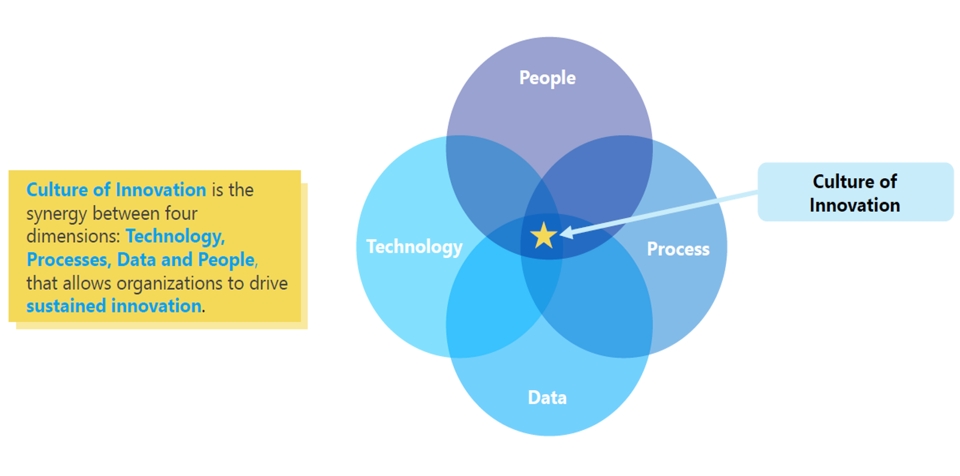
KEY FINDINGS FOR INDIA
A culture of innovation is critical to driving innovation and business resilience in the new normal
77% of Indian organizations have found innovation to be critical or important to their performance and resilience. Moreover, the pandemic has accelerated the evolution towards innovation, with companies in India maturing by 4% in their journeys over the last six months.
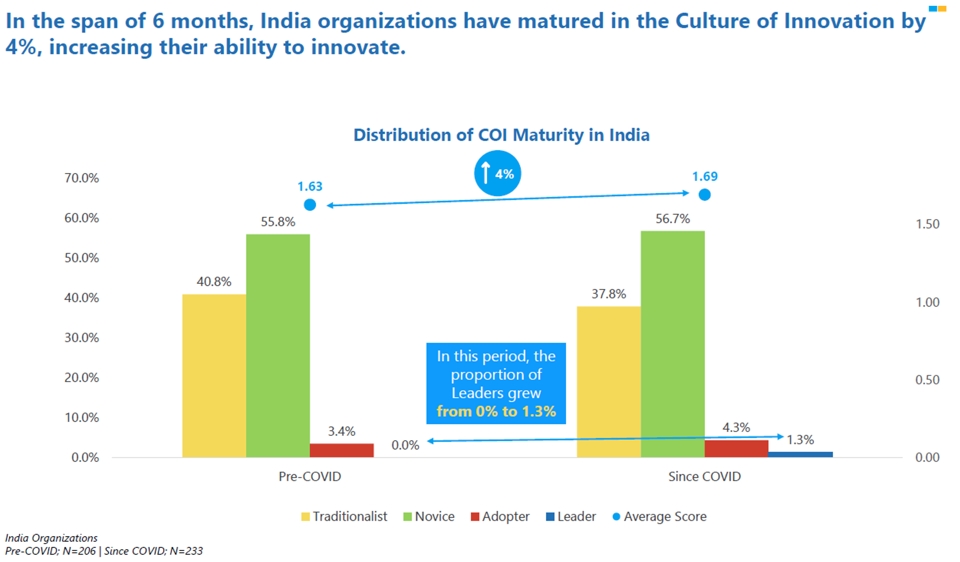
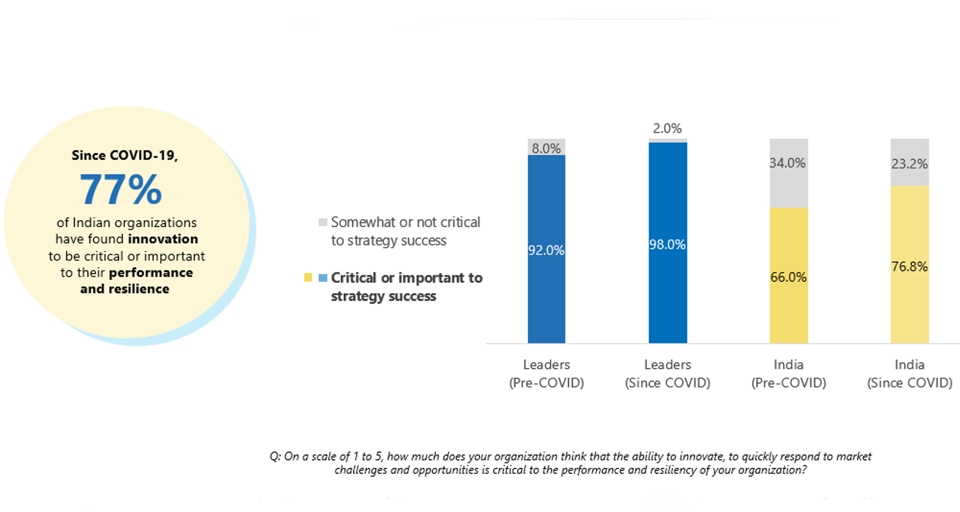
Innovation has become easier
Indian organizations were compelled to innovate in order to build resilience in the new normal. However, this development also resulted in innovation becoming easier for organizations in the country. According to the survey, 64% of respondents acknowledged that innovation has become easier in the post-COVID-19 era. Prior to the pandemic, only 32.5% of Indian businesses found innovation in their products and services easy.
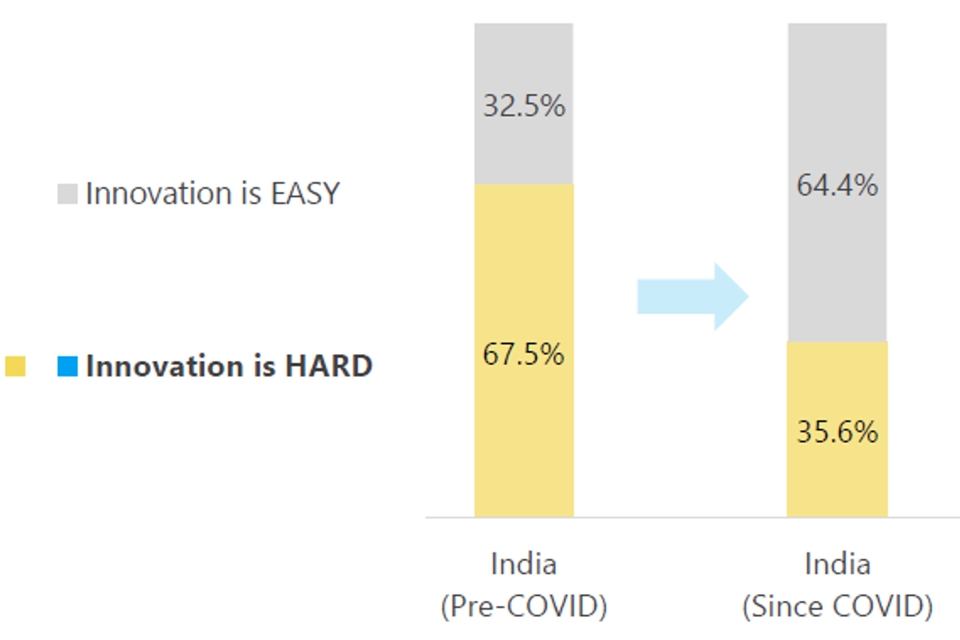
Moving forward, organizations in India say that they will prioritize increasing customer centricity, while leaders in Asia Pacific plan to focus on investing in technology infrastructure that is robust and allows scalability and flexibility.
Culture of Innovation driving digital adoption
Organizations in India are focusing on increasing the percentage share of their revenue derived from digital products and services or digital business models. 78% of the respondents have stated that they are speedily embracing digital capabilities. According to the study, businesses in India are aiming to increase their revenue from digital products and services from one third (36%) at present, to half (50%) in the next 3 years.
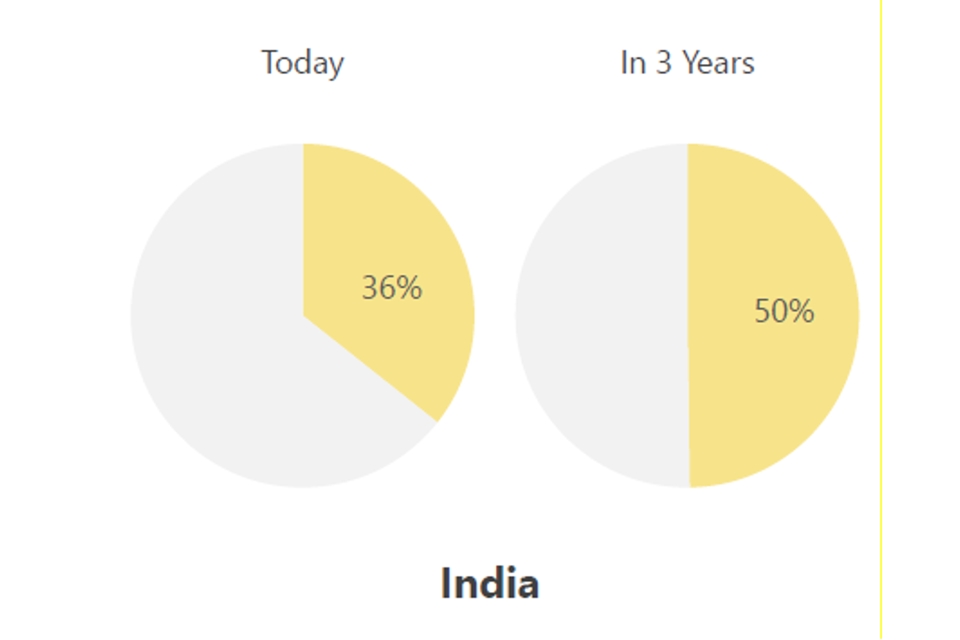
Beyond digital products, services and processes; leaders understand the urgency of redesigning their overall business models. Indeed, organizations are already increasingly focussing on customer centricity as they work to ensure business resilience and faster recovery.
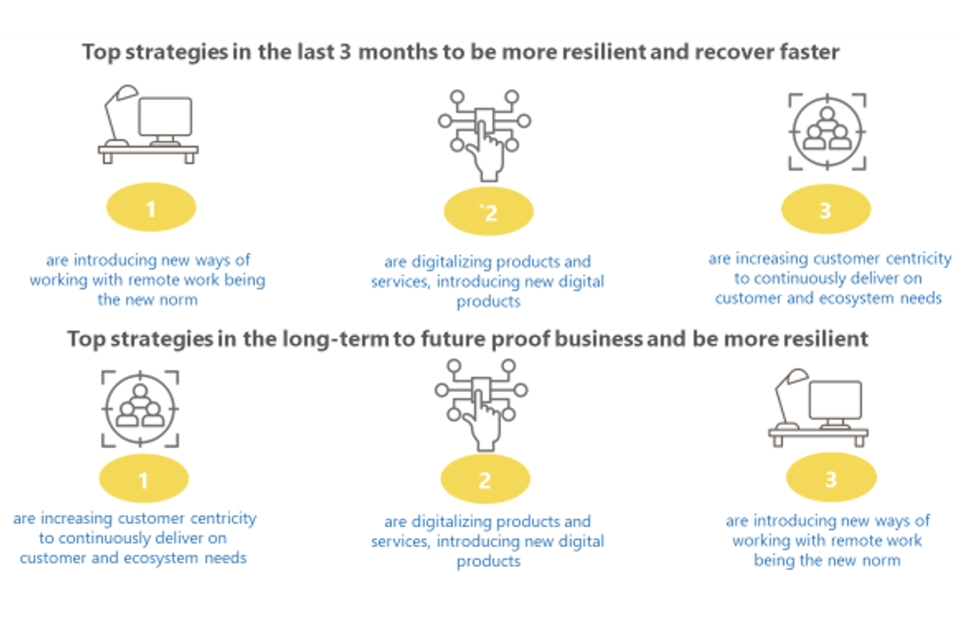
Technology and People are key in India
When asked about their priorities for the next 12 months ahead, organizations in India indicated that they will focus on technology (45%) as the most essential areas for business resilience and recovery. 18.5% businesses plan to focus on embracing risks and driving innovation through ongoing learning, and the right talent and skills. Supported by technological transformation, organization also need to focus on encouraging new and breakthrough ideas among its employees as well as hiring a diverse workforce.
Culture of Innovation – a success formula for resilience and faster economic recovery
Using the Culture of Innovation framework, the study revealed the best practices that organizations can adopt to progress across people, technology, data and process.
Recommendations for organizations
-
- Fortify resilience with technology
Strengthen the organization’s approach to digital transformation through resilient technologies, such as cloud, artificial intelligence and machine learning, allowing simplification, flexibility and agility. At the same time, ensure that cybersecurity is infused into the organization’s digital footprint. - Invest in people’s capabilities and skills
Create open and inclusive environment to attract the best and diverse talent. Integrate workplace innovation efforts that will be crucial to accelerate transformation; ensure the right rewards and incentives to encourage innovation; and unlock people’s capabilities by upskilling to sustain the pace of innovation. - Leverage data to increase competitiveness
Capitalize on the value of data by developing new data-driven products and services, and exploring new revenue streams to increase the organization’s competitiveness. It will be key that data-driven insights for enterprise-wide collaboration and decision-making, in addition to instituting a knowledge sharing culture. - Redesign processes to empower people to continuously drive innovation
Create a systematic approach to drive innovation – from ideation to commercialization – and establish a centralized digital transformation budget, along with digital KPIs. Customer centricity should be at the heart of continuous improvements, and a feedback loop is necessary to capture learnings on an ongoing basis.
- Fortify resilience with technology






